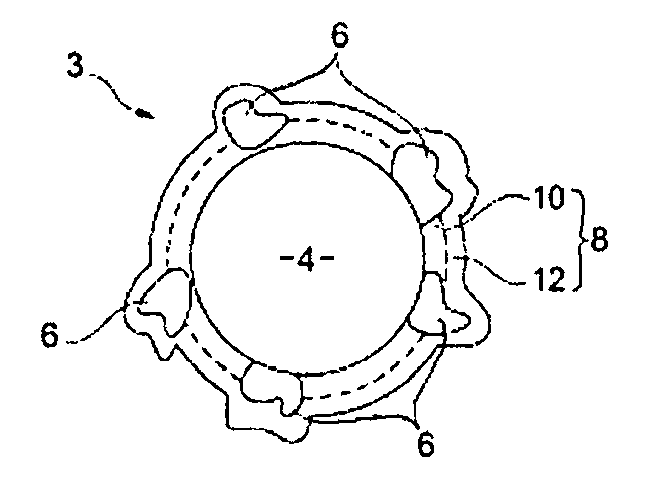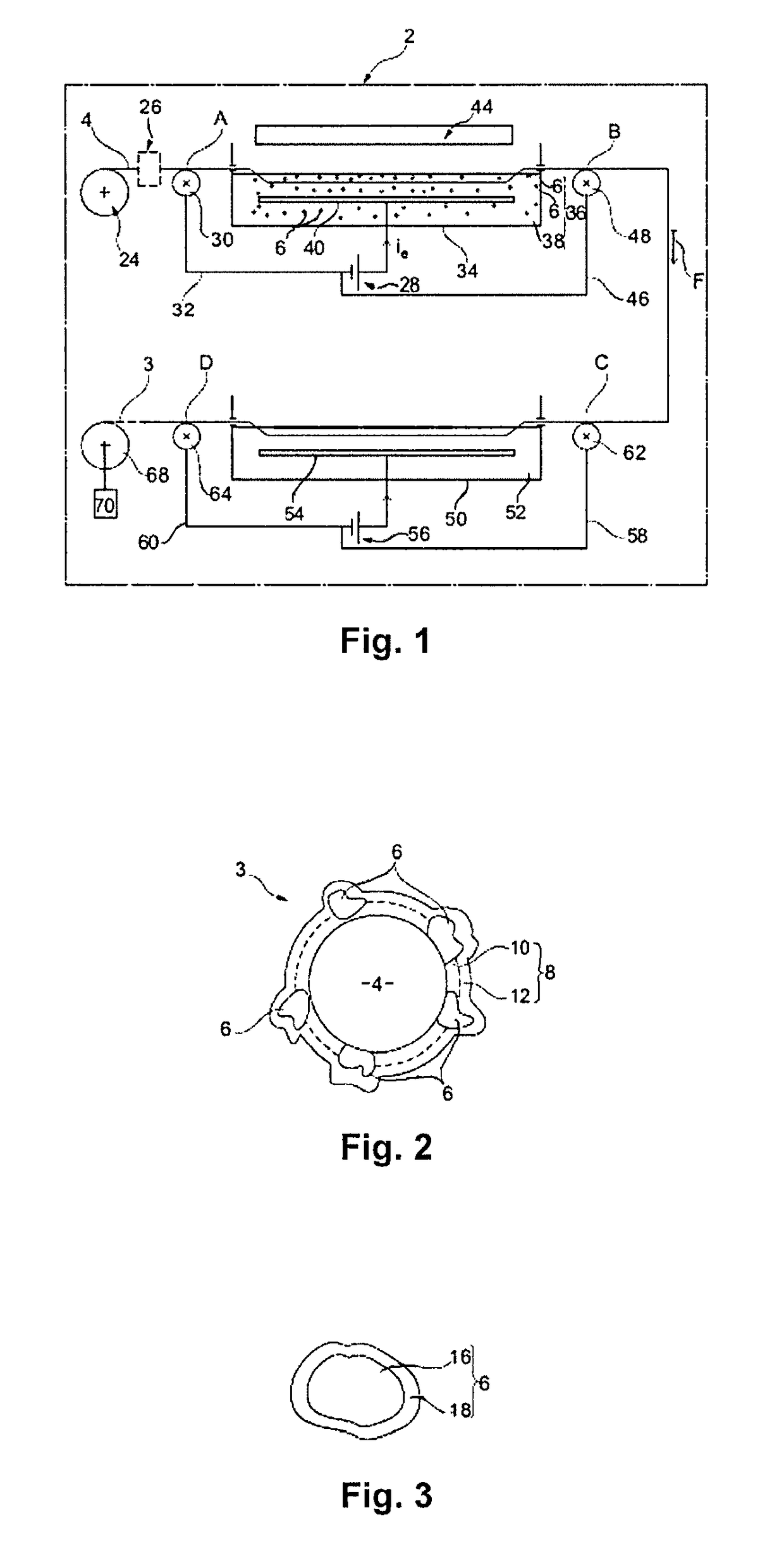Abrasive sawing wire, production method thereof and use of same
a technology of abrasive sawing wire and production method, which is applied in the field of sawing, can solve the problems of reducing affecting partly eroded binding layer to expose the abrasive particles, etc., and achieves the effect of improving the hardness of ni/co alloy binder, improving abrasion resistance, and improving hardness
- Summary
- Abstract
- Description
- Claims
- Application Information
AI Technical Summary
Benefits of technology
Problems solved by technology
Method used
Image
Examples
Embodiment Construction
[0077]The device (2) illustrated in FIG. 1 enables to implement a specific embodiment of the electrodeposition method on a steel wire (4) to prepare the abrasive wire (3) according to the present invention.
[0078]The method especially comprises the steps of:[0079]unwinding a steel core (4) (steel wire) stored in the form of a coil (24), along the direction of arrow F;[0080]optionally, degreasing steel core (4) in an alkaline medium;[0081]optionally, pickling steel core (4) in an acid medium;[0082]optionally, passing steel core (4) through a magnetization device (26) which applies a magnetic field, having an intensity advantageously greater than 800 Nm. Core (4) is thus permanently magnetized;[0083]electrodepositing on the steel core a coating comprising a binder and abrasive particles, said binder being a nickel / cobalt alloy having a cobalt content in the range from 20% to 85% by mass relative to the mass of the Ni / Co alloy, by passing in a bath (B1) (36) of electrolyte (38) comprisi...
PUM
| Property | Measurement | Unit |
|---|---|---|
| force | aaaaa | aaaaa |
| total diameter | aaaaa | aaaaa |
| diameter | aaaaa | aaaaa |
Abstract
Description
Claims
Application Information
 Login to View More
Login to View More - R&D
- Intellectual Property
- Life Sciences
- Materials
- Tech Scout
- Unparalleled Data Quality
- Higher Quality Content
- 60% Fewer Hallucinations
Browse by: Latest US Patents, China's latest patents, Technical Efficacy Thesaurus, Application Domain, Technology Topic, Popular Technical Reports.
© 2025 PatSnap. All rights reserved.Legal|Privacy policy|Modern Slavery Act Transparency Statement|Sitemap|About US| Contact US: help@patsnap.com


